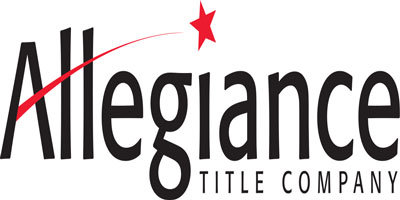BY BRANDI SMITH
Its terrain might be as flat as its name suggests, but Plano’s stock is rising as fast or faster than any other city in Texas. The community of 270,000 added a staggering 11,000 job to its economy in 2014 and 2015 with an onslaught of corporate relocations guaranteed to add to that total in the years to come.
“We’re a big city and we’re a strong community,” said Plano Mayor Harry LaRosiliere. “Despite being the ninth largest city in Texas and 72 square miles in size, we still have a sense of community and that really is a difference maker.”
“Plano 3.0”
Plano got its start in the 1840s, with its name coming from the Spanish word for “flat” (“llano”). Railroads helped the city thrive into the early 1900s, but the population exploded to 72,000 in 1980 from just 17,872 a decade before.
“In the 1980s, we were a bedroom community of about 80,000. All the jobs went to Dallas during the day,” explained Mayor LaRosiliere.
In addition to a growing roster of residential residents, Plano began to add corporations as well, including JC Penney and Frito Lay. By 1990, the city’s population had passed that of the Collin County seat, McKinney, and it continues to grow.
“In the next two decades, we grew from 125,000 to 250,000. We were one of the fastest growing cities in America and we were known as the big suburb of Dallas,” Rosiliere said. “Plano is rated one the safest cities in America. Our schools graduate 98 percent of our kids. Accessibility, mobility around town is great. We have a very educated workforce. Two thirds of our adults have a bachelor’s or master’s degree.”
The mayor, who took office in May 2013, describes the latest phase of development and growth “Plano 3.0.”
“We are now our own city. We have our own identity. We’re vibrant and safe,” he said. “We offer our citizens a varied, various cultural and educational opportunities. We’re comfortable to compete on the global stage for any business, family or individual that’s looking for a home.”
With its own identity comes the challenge of balancing development needs, something the city started preparing for years in advance.
“We’ve done things like hire more people on our planning and building inspections, so that the ease and facility of the construction and the projects are moved along in a manner that is conducive, because we all know in business time is money,” LaRosiliere said. “We even created a position of special projects director for major projects of a certain size, or square footage, or scope.”
“Best of both worlds”
Plano’s special projects director is no doubt busy with one corporation after another announcing its move to the city.
“Plano is experiencing unprecedented growth from a corporate side,” said Mayor LaRosiliere. “As of the end of last year, before we had the last two announcements of JP Morgan and Fannie Mae, we’ve created nearly 11,000 jobs in the past two years, with a median salary of a little $75,000 per job.”
Because the city is surrounded by other municipalities, it cannot expand its boundaries. It is, however, making use of what little undeveloped land remains within its limits with the help of companies such as KDC, a commercial real estate company that got its start in Texas back in 1989.
“KDC is very customer-focused and tenant-driven, so our clients kind of tell us where to go,” said Colin Fitzgibbons, the company’s vice president. KDC is currently working on the Legacy West project, which already has several big names attached to it.
“The corporations that we’re fortunate to do business with have been attracted to that best of both worlds scenario where you get the convenience of the suburbs but the vibrancy of an urban area,” Fitzgibbons said, explaining why its clients chose Texas’ ninth-largest city over some of its peers.
Plano currently has 33 companies with 500 or more employees, of which 15 have at least 1,000 employees. Those corporations include FedEx Office, Hilti North America, Toyota, Liberty Mutual and Capital One.
It was far from the first to move its headquarters to Plano, but Toyota’s decision to relocate its North American headquarters there seemed to usher in a new wave of development.
The automaker is currently building its $350 million facilities, which include seven towers, in KDC’s Legacy West development. The project, initially set for 1.3 million square feet, has grown in scale substantially and is now up to 2 million square feet.
“We’re just about done with the final, final estimates,” Jim Lentz, Toyota North America’s CEO, told The Dallas Morning News. “In the next 90 days, we will nail that down.”
Construction on the massive complex is set to be complete in early 2017, even as the company tries to determine just how many of its employees will relocate to the Lone Star State.
“Toyota sent about 400 of what they call ‘pioneers’ to live here and kind of scout the area out for the rest of the company,” Fitzgibbons explained. “The company maybe felt that 40 or 50 percent of the folks would make the move from California to Texas, but because those pioneers have had such a great experience here, [Toyota] really thinks that maybe 75 or 80 percent of the folks will make the move.”
Just months after Toyota North America announced its decision to call Plano home, Hilti North America opened the doors to its new corporate offices there. The company, which specializes in tools and fastening systems for the construction industry, has roughly 250 employees working in the two floors it leased in the 23-story Legacy Tower.
CEO Cary Evert told the Dallas Business Journal: “While we wanted to relocate the headquarters to a city with a thriving business environment, we also wanted to ensure that our team members had a great place to live. We feel that Plano is that city.”
FedEx Office’s managers obviously felt the same, opening their new 265,000-square-foot headquarters in October 2015. The $40 million space provided the company and its 1,200 employees with room to grow as needed, according to Ari Spitzer, vice president of real estate and development for FedEx Office.
“The facility brings our team members together under one roof, increasing collaboration and enabling us to provide even better support for our internal and external customers,” said Brian Philips, the company’s chief executive officer.
“We are a mature city”
A question that may stand out to those outside of Plano might be: why? Why are so many of these international corporations relocating to a city that typically flies under the radar. The answer is a list of qualities that, city leaders say, makes Plano stand out.
“We’re a safe city. We have a fantastic school district and we have a terrific infrastructure. Those are the three key components. The fourth one is what I call the secret sauce, which is our people,” said Mayor LaRosiliere. “The labor pool here is really deep. The companies that are moving large numbers of jobs here or even small numbers of jobs are having no problem at all filling those positions and finding the talent that they came here to seek.” Not only does Plano provide an excellent area for employees to live, it cultivates an environment where businesses can thrive.
“There’s no state income tax. There’s a right to work state so that makes it a little bit easier to do business. Most of the municipalities here are very business friendly and have a can-do attitude in terms of helping companies get things done. It’s in the Central time zone, which seems to be pretty attractive to businesses. We’ve got 2 major airports that can get you anywhere virtually,” explained Fitzgibbons.
Those attributes only mean the city can expect more attention from international corporations in the years to come. Barely a few weeks into 2016, Plano city leaders were already celebrating relocation announcements from Fannie Mae and JP Morgan Chase, which will bring an estimated 8,000 more jobs to the community.
“Companies are consolidating here and they’re able to find the talent that they need to run their business so it’s been great to see the explosive growth in the past three to five years and I do hope it continues,” Fitzgibbons said, though he admitted that it’s difficult to predict if and when lightning will strike again.
“These kind of mega-projects seems to fall out of the sky,” he said. KDC’s Legacy West, however, is expected to blossom in 2016 and buildings finally start to take shape. “This is going to be a construction year for Legacy West,” Fitzgibbons said, “but in 2017, we’ll have grand openings for the retail, the hotel and a couple of the office buildings.”
Plano city leaders also admit continued corporate growth at the the current level is likely unsustainable.
“I don’t know that we’ll grow exponentially from here because as of last year we had maybe about seven percent of our undeveloped commercial property left, but enough to still make an impact on the community,” said Mayor LaRosiliere. “From there, it’s redevelopment because we are a mature city. There are going to be places that may need to change from what it was to something new.”
There are many ways to describe the evolution that lies ahead for Plano – explosive, captivating, astounding, exponential – but flat is certainly not one of them.
Click Here to Download this Article.










